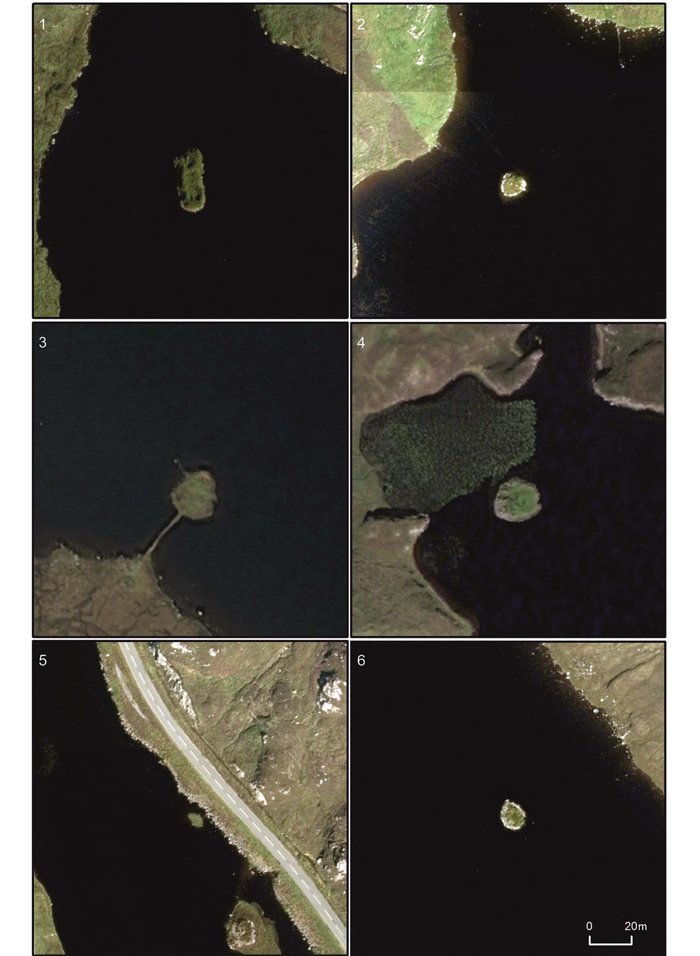Mysterious Synthetic Islands in Scotland Are Hundreds of Years Older Than We Thought

Within the distant previous of the northern British Isles, historical people did not at all times dwell on dry land. Throughout Scotland, Eire, and Wales, the foundations of hundreds of mysterious synthetic islands survive to this present day: referred to as crannogs, these unusual constructions have been constructed way back by prehistoric palms, within the chilly waters of rivers, lakes, and sea inlets.
Precisely how way back these items have been formed is one thing that is by no means been totally understood. Historically, archaeologists estimated Scottish crannogs emerged no sooner than the Iron Age, being first constructed round 800 BCE.
However in newer years, proof has come to mild that these engineered constructions could possibly be far more historical, and a brand new examine confirms the formations are literally hundreds of years older than we realised.
(Fraser Sturt)
Utilizing radiocarbon relationship of 4 websites positioned within the Outer Hebrides (the Western Isles of Scotland), researchers have found historical crannogs relationship again to 3640–3360 BCE, that means early people have been constructing these large synthetic islands roughly 5,500 years in the past, pre-dating even the development of Stonehenge.
“These crannogs symbolize a monumental effort made hundreds of years in the past to construct mini-islands by piling up many tonnes of rocks on the loch mattress,” says archaeologist Fraser Sturt from the College of Southampton.
It is not the primary time archaeologists have questioned whether or not crannogs might have Neolithic origins. Excavations within the 1980s on the crannog Eilean Dòmhnuill instructed it might date again hundreds of years, however for many years no different comparably historical specimens have been positioned.
Issues modified in 2012, when former Royal Navy diver Chris Murray, who was a resident of the Scottish Isle of Lewis, grew to become intrigued by a crannog within the waters of Loch Arnish.
Diving beside the remnants of the weathered platform, Murray made a completely surprising discovery: hidden beneath the lake’s floor across the engineered island, he discovered a scattered assortment of remarkably well-preserved Early/Center Neolithic pots mendacity on the loch mattress.
 Neolithic pottery recovered from Loch Arnish in 2012. (Chris Murray)
Neolithic pottery recovered from Loch Arnish in 2012. (Chris Murray)
Working with Sturt and different researchers, the crew investigated Loch Arnish and several other different crannogs – a few of which had not beforehand been recognized in archaeological information and have been positioned utilizing Google Earth.
In complete, the researchers found over 200 Neolithic ceramic vessels discarded from 5 crannogs – proof of an intensive and arcane cultural apply we by no means knew about till now.
“Survey and excavation of those websites has demonstrated – for the primary time –that crannogs have been a widespread function of the Neolithic and that they might have been particular areas, as evidenced by the deposition of fabric tradition into the encompassing water,” the researchers report in a brand new paper.
“These findings problem present conceptualisations of Neolithic settlement, monumentality and depositional apply, whereas suggesting that different ‘undated’ crannogs throughout Scotland and Eire might doubtlessly have Neolithic origins.”
The positioning investigations, which encompassed a combination of underwater and aerial surveying, plus excavations and radiocarbon evaluation, revealed clear proof the crannogs have been human-made. The traditional builders created the constructions by piling up boulders to make synthetic islets.
At one of many websites, Loch Bhorgastail, historical timbers have been additionally noticed across the edges of the crannog, thought to have been positioned to extend the steadiness of the rock construction.
 Six crannogs which have produced Neolithic materials. (Garrow & Sturt, Antiquity, 2019)
Six crannogs which have produced Neolithic materials. (Garrow & Sturt, Antiquity, 2019)
Generally, a stone causeway leads out to the island; at different websites, no causeway appears to exist, suggesting the crannog may need been accessed by boat, or maybe a picket bridge.
Whereas no different timber proof stays at any of the websites, it is thought the crannogs might have borne picket constructions and dwellings constructed on high of them, from which historical pottery was as soon as hurled – and never, it appears, accidentally.
“The portions of fabric now recognized round a number of websites, and the place of those vessels in relation to the islets, means that pots have been deliberately deposited into the water,” the researchers write.
“Many vessels had substantial sooting on their exterior surfaces, and a few had inner charred residues; that they had clearly been used earlier than deposition.”
As for what these historical disposals into the loch signified, and the opposite functions of the crannogs might have had, we do not know.
However given the quantity of labor that will need to have gone into creating these large constructions – engineered with stones weighing as much as 250 kilograms (550 lbs) a chunk – it is clear they will need to have had some distinctive significance to the prehistoric group who as soon as inhabited these mysterious areas.
Maybe the crannogs have been reserved for essential celebratory feasts, or utilized in mortuary rituals, with the watery backdrop of the loch someway framing the otherness of those long-ago gatherings.
“They’d have required an enormous funding of labour to construct and possibly remained vital locations for a very long time,” the researchers clarify.
“These islets might even have been perceived as particular locations, their watery environment creating separation from on a regular basis life. The method of crossing over to the islets might have emphasised this separation; the practices that passed off on them do seem to have been very completely different from these of ‘regular’ life.”
The findings are reported in Antiquity.